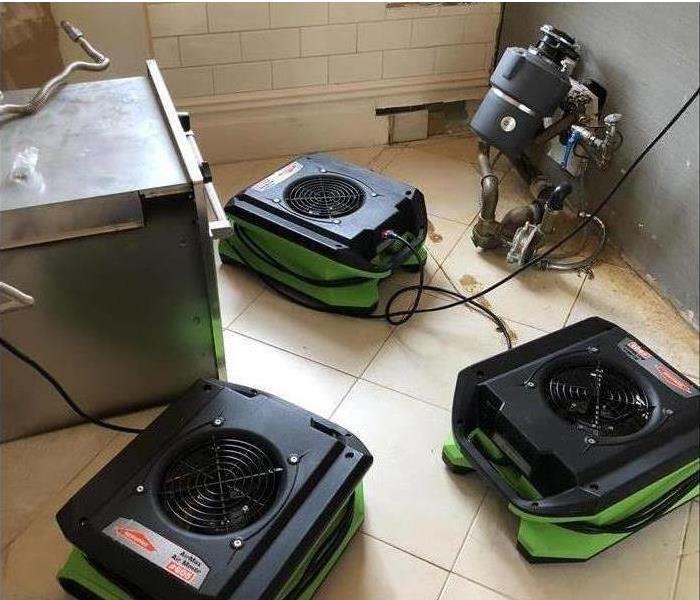We Have the Proper Techniques to Restore Your Manhattan Home After a Flood
8/20/2022 (Permalink)
 SERVPRO strives to preserve and restore flood-damaged elements and contents during a Manhattan service.
SERVPRO strives to preserve and restore flood-damaged elements and contents during a Manhattan service.
Crucial Steps in Managing Flood Damage Incidents in Manhattan Involving Sanitary Water
Flooding incidents cause different categories of water loss. Category-one water loss involves sanitary water, mostly when rainwater filters into the house. Typical scenarios include winds or debris opening up holes on the roof and letting in rainwater. Alternatively, driving rain can push rainwater through gaps in doors or windows. With a few crucial steps, controlling flood damage involving clean water is possible.
Protecting Contents
When flood damage incidents in Manhattan involve sanitary water, the intrusion point is usually at an elevated point, meaning no groundwater reaches the interior. Such incidents can affect more items, so they need to be protected. Suppose we find an ongoing intrusion such as arriving when it is still raining or draining water trapped in the ceiling. In that case, our SERVPRO technicians use plastic sheets to cover contents protecting them from unnecessary exposure. We also use towels to remove excess water from items and relocate materials from the floor where most collect.
Expedited Water Extraction
Extracting the standing water left after flood damage strikes help kick start restoration of the property to its preloss state. Extracting the water requires equipment with the right lift and volume capacity. A truck-mounted water extractor helps our SERVPRO crews move significant volumes of water within a short period. For minor intrusions, portable extractors are sufficient. Sometimes the floor type might influence the extraction method. For example, using towels to remove water on hardwood floors and setting up drying mats might be appropriate in some cases.
Humidity Control
Moisture build-up in the structure is common during flooding. Although the drying process starts fully after other restoration steps, including water extraction and cleaning, there is a need for humidity control before that to prevent secondary damage caused by moisture migration. Our SERVPRO crews use different approaches to provide this control, including setting up dehumidifiers or maintaining negative pressure in some areas.
Even though flooding happens unexpectedly, it is possible to manage the outcome. Call SERVPRO of Upper West Side at (347) 970-2972 to help. We're Faster To Any Size Disaster.






 24/7 Emergency Service
24/7 Emergency Service